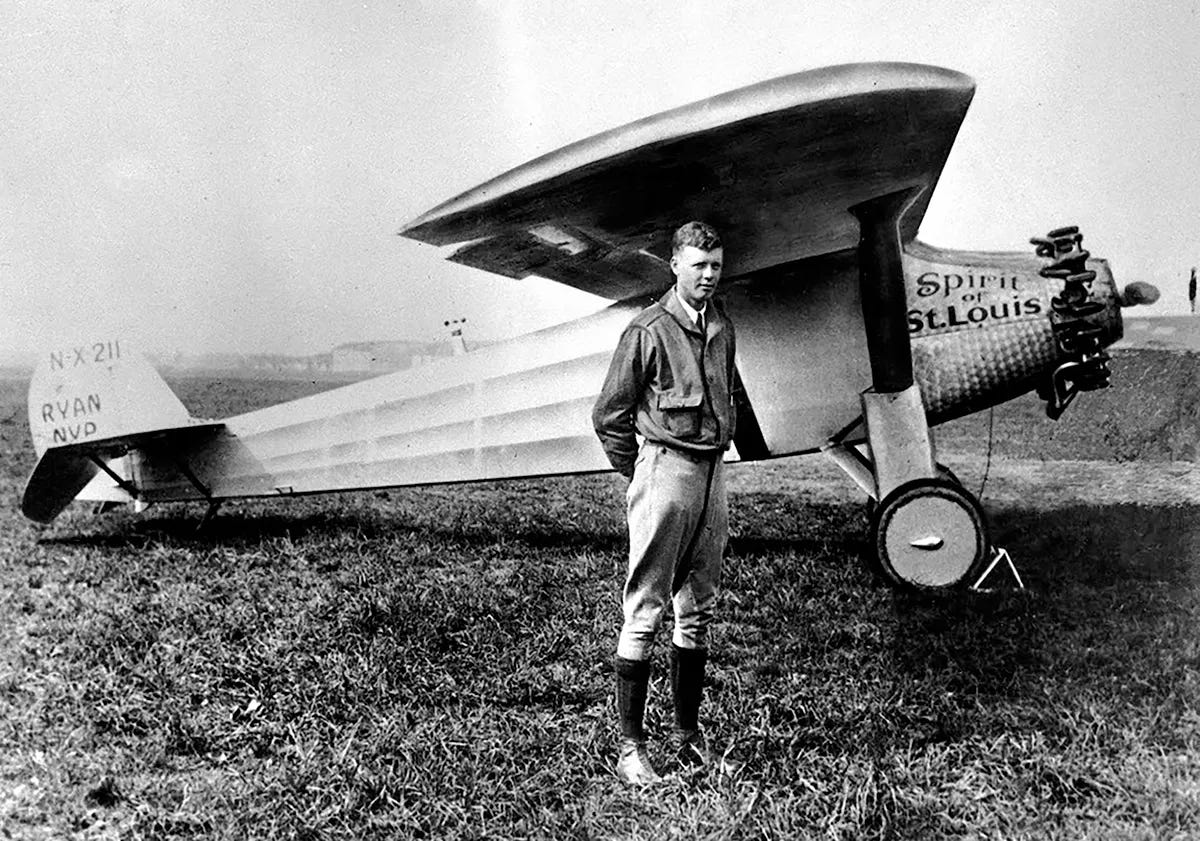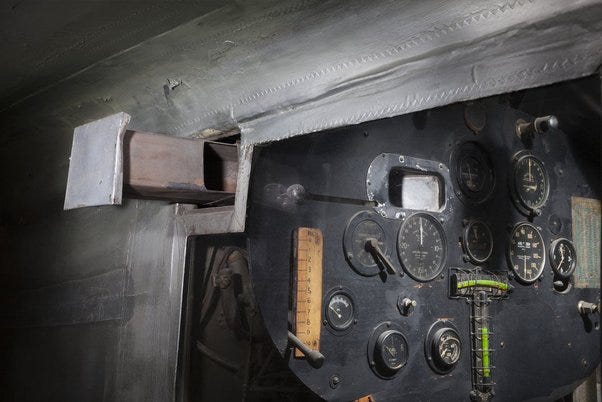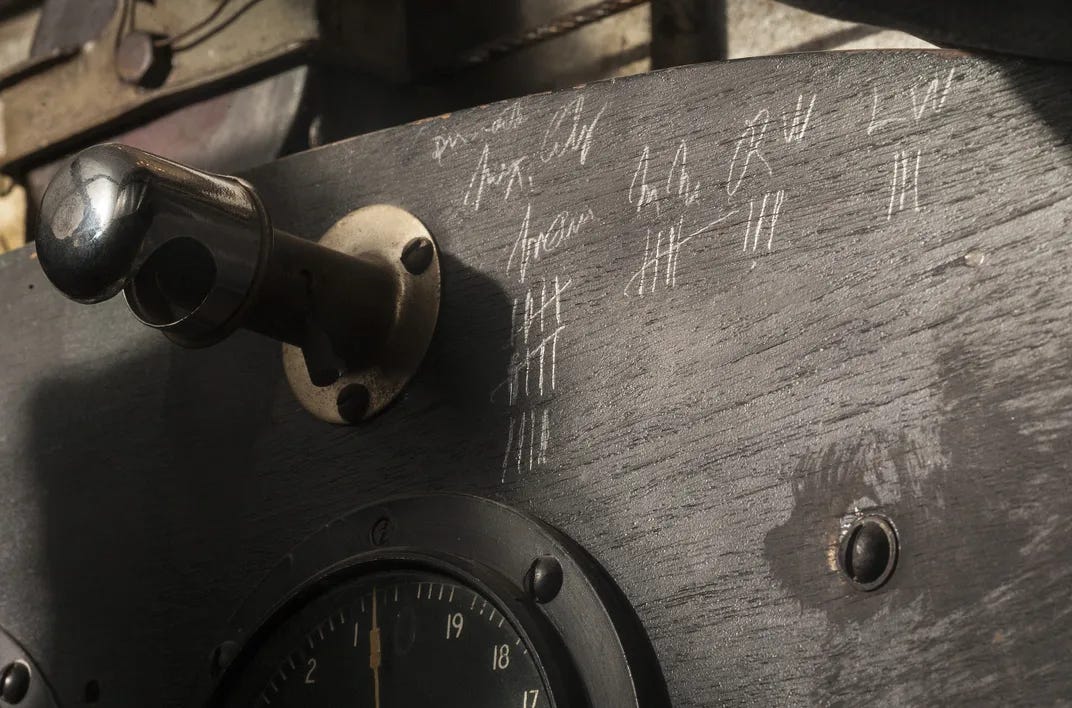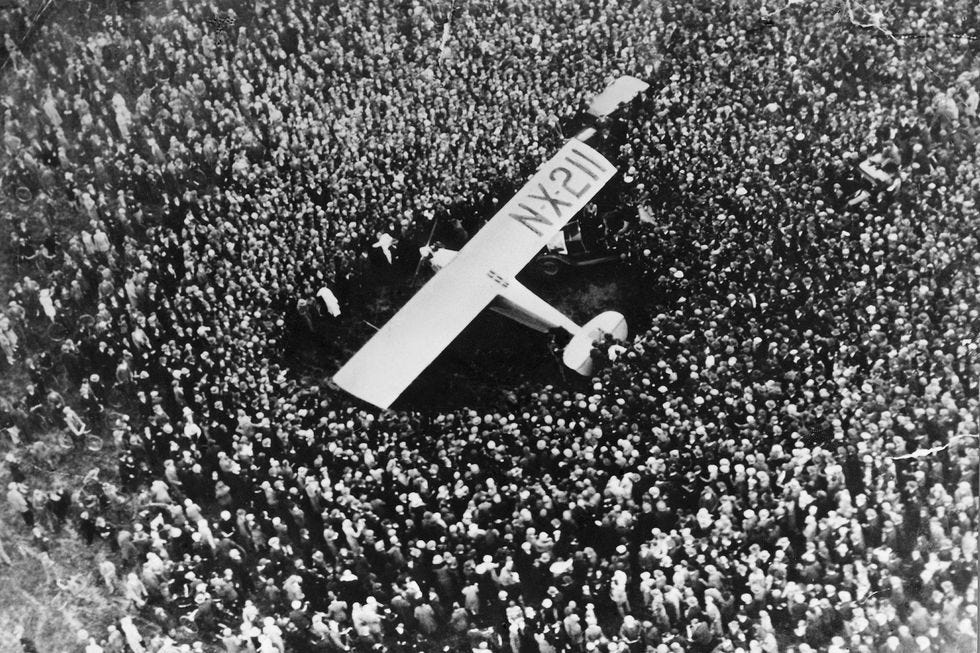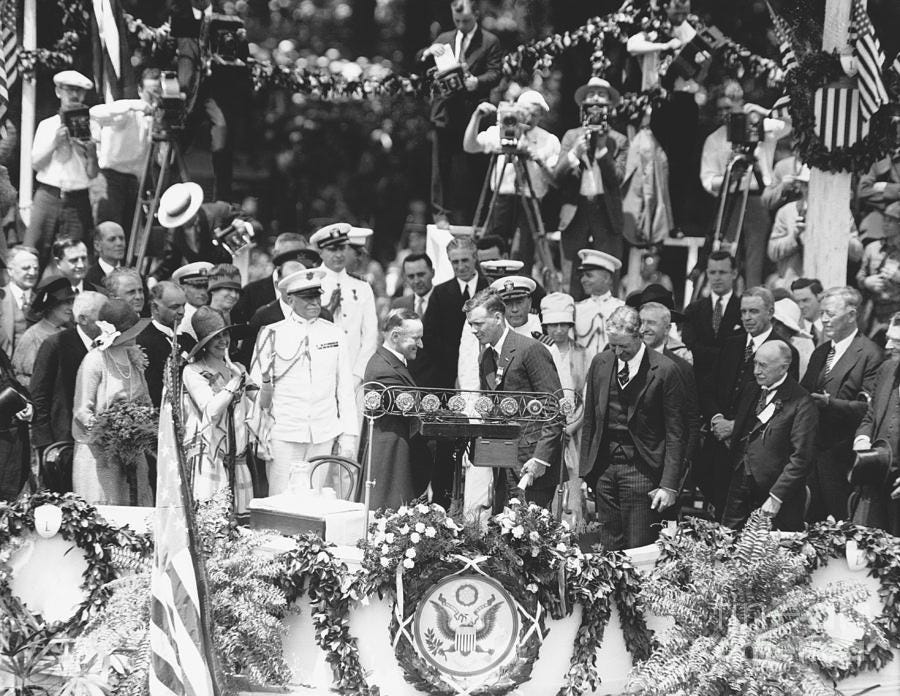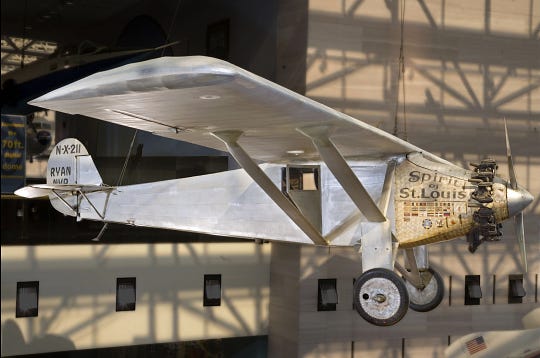True American Pride - Real Things to Celebrate About This Nation (#11)
Remembering an American "Lone Eagle"
Day 11 of my month-long American Pride celebration. Today I celebrate and remember an American hero who I always wanted to know more about: Charles Lindbergh. In all the years I spent as a US History teacher, I was never able to spend more than 5-10 minutes merely mentioning “Lucky Lindy” as part of a unit on the 1920’s Such a shame. Today I think it’s almost impossible to imagine how impressive - and unimaginable - is historic solo flight across the Atlantic was in May 1927. It’s a story that deserves retelling.
Lindbergh grew up in the Midwest and became interested in flying when he was 20. After just a minimum of training, he was soon gaining fame as a “barnstormer”: performing stunts as a pilot, wing walker, and parachutist. He also gained experience and notoriety as an air mail pilot, flying from St. Louis to Chicago. Because of all this, in 1927, he convinced a group of St. Louis businessmen to fund his attempt to compete for the $25,000 Orteig Prize, which had been offered for the first nonstop flight between New York and Paris.
Lindbergh designed himself the plane he would fly: a single engine, high-wing monoplane named “The Spirit of St. Louis”. One unique feature of its cockpit that few people know is that Lindbergh was unable to see out the front of it! To see ahead in flight he had to peer through a makeshift periscope he attached to the outside of the plane.
The cockpit and periscope of “The Spirit of St. Louis”
Lindbergh made chalk marks on the control panel for every hour of fuel consumed
In the early morning of May 20, 1927, “The Flying Fool” (as some called him) took off from Roosevelt Field on Long Island NY. Destination: Le Bourget Field near Paris, France, some 3,600 miles away. After 33.5 hours alone, Lindbergh and “The Spirit of St. Louis” touched down at Le Bourget at 10:24 pm the next day. The bewildered American stepped out of his cockpit and was instantly mobbed by a large crowd that had come to greet him. Overnight Lindbergh became a folk hero on both sides of the Atlantic and a well-known figure in most of the world. And on this day (June 11) in 1927, U.S. President Calvin Coolidge presented him with the Distinguished Flying Cross and made him a colonel in the Air Corps Reserve.
Lindbergh’s landing at Le Bourget, Paris FRA May 21 1927
Coolidge gives Lindberg the DFC - June 11 1927
Lindbergh went on to live a life filled with both achievements and notoriety, none of which probably suited a man who was very private in nature. But there is no question in my mind that his heroic acheivement in 1927 inspired many young Americans after him to “dare to do the impossible”. And that kind of determination and courage is well worth remembering and celebrating today.
“The Spirit of St. Louis” hangs today in The Smithsonian Museum, DC



